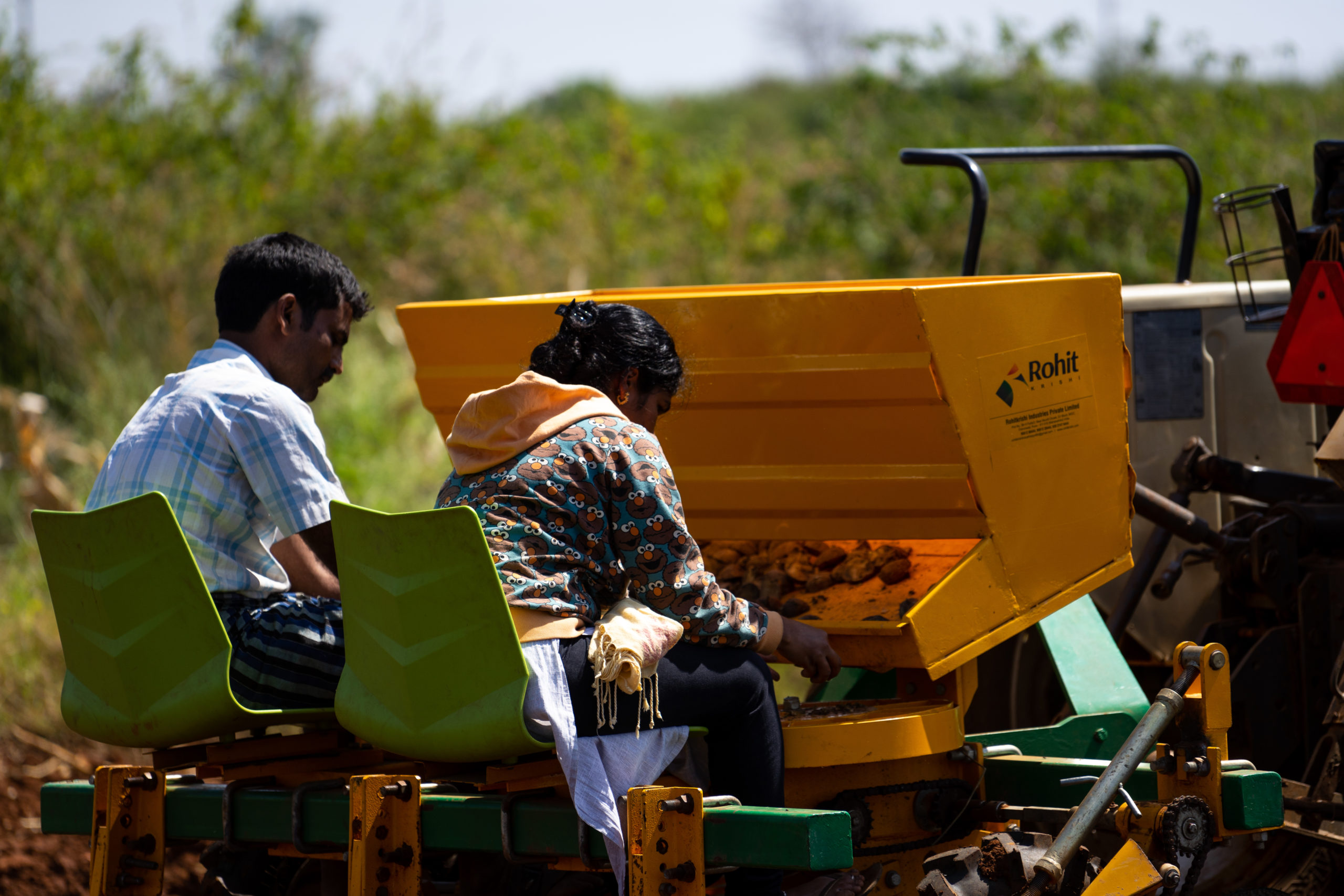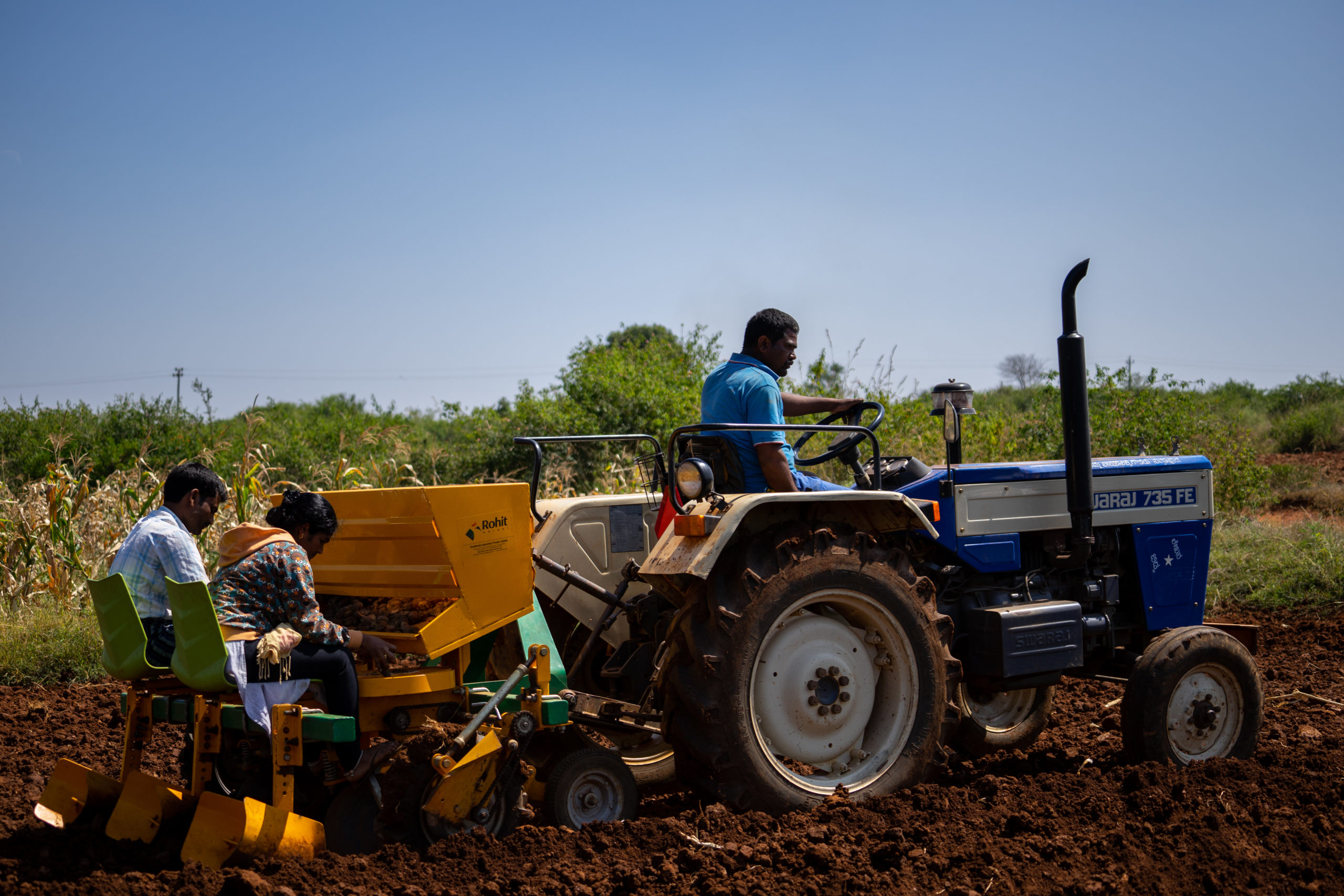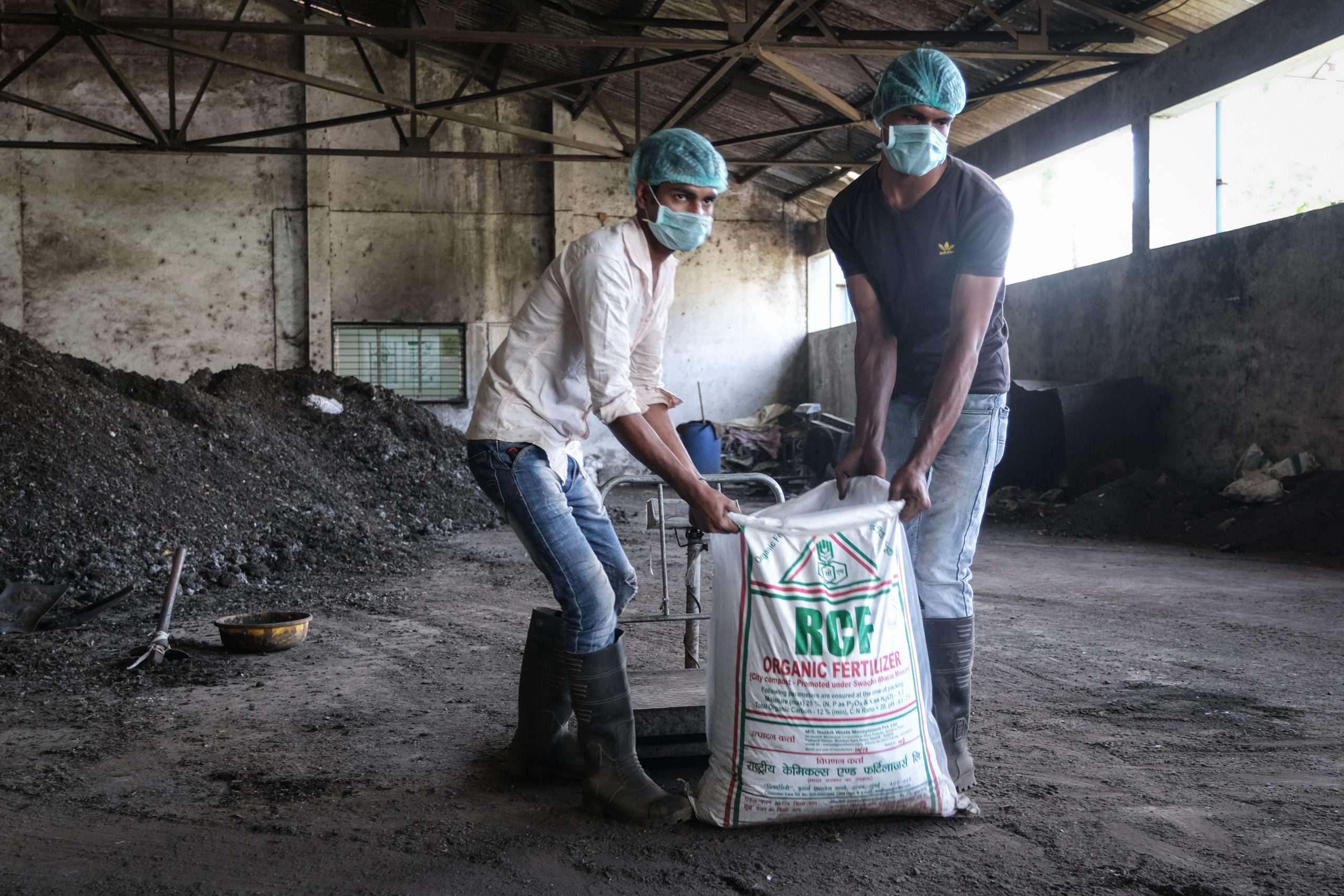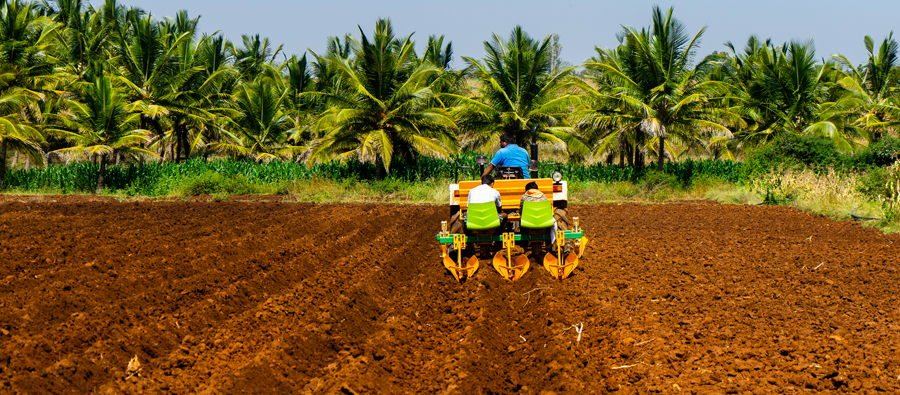Potato demand in India is on the rise, and productivity is keeping up to meet it. Traditional potato growing areas, like Hassan and Peth in the states of Karnataka and Maharashtra, are playing a crucial role in developing the South Indian potato market. But, how can higher production and thus a higher income for farmers be ensured, when soil degradation is on the rise? If soil is not sustainably managed, the rural economy and the livelihoods they support cannot be guaranteed.
But, two solutions are underway that aim to revolutionise the potato planting process in the Indian states of Maharashtra and Karnataka and can be used across Indian farming systems.
One solution is to mechanise the agricultural process. To ensure that the potato plant thrives well, the seeds must be planted at least eight centimetres deep, with a spacing of 35 centimetres in loose soil. Cultivating an entire field in this way, in the midday heat, is not only exhausting but also expensive. But, with the right tools, growing potatoes can be made simple and affordable.
What used to typically be done with either hand or ox power, can now be done semi-automatically. Such tools have flourished across the entirety of the agriculture sector but have only recently become available to smallholder farmers in India.

The new tool in action.
The Green Innovation Centre for the Agriculture and Food Sector – India, a project commissioned by the German Federal Ministry for Economic Cooperation and Development (BMZ) and implemented by German Corporation for International Cooperation (GIZ), have partnered with farmers to develop a new potato planting machine. Using expert advice, the insights of farmers and the local company Rohit Krishi Industries, the Centre designed a best-in-class tool that accelerates the work considerably. It is also proven to increase crop yields and drive incomes due to the accuracy of planting.
The higher ridges and deep ploughing are suitable for soils of various conditions and types. And in fact, this even helps to improve water drainage in the field, meaning less weeding is required. This means that the potato tubers are less susceptible to damage and disease. The planter also ensures uniform growth and maturity, so the harvest is of a higher quality.
Another issue that has been a long-term concern for Indian farmers and policy-makers alike is soil health. The carbon content of Indian soil has been gradually decreasing. This has created new challenges, as carbon improves fertility, releases nutrients and protects plants from harmful substances. Around 3.7 million hectares of soil in India have been found to have depleted organic matter.

Farmers in India have benefitted from the mechanisation of the planting process.
Historically, traditional farmyard manure has been used to replenish carbon and nutrients in the soil. But, with decreasing livestock, local availability of organic waste is reducing and limited meaning farmers required alternate sources of manure.
As part of the ProSoil initiative, GIZ has been working to reuse urban municipal waste in order to fertilise the soils, in an initiative called Urban-Rural Nutrient and Carbon Cycle (URNCC). Using compost from urban organic waste streams has shown encouraging results in terms of agricultural productivity, especially compared to other sources of organic matter.
This kind of municipal waste provides a good source of carbon as well as other key nutrients, providing an opportunity to plough it back to soils in rural areas, through products like composting and other value-added products like phosphorus rich organic manure (PROM), thereby improving the health of the soil and also contributing to carbon sequestration.
The new compost allows potatoes, and other crops, to withstand more moisture stress in drier periods, as it increases the water holding capacity of the soil. It is also better decomposed and does not lead to any fungal diseases, as the farmyard manure would typically be treated with fungicide. Through a successful cooperation of both GIZ projects, the Green Innovation Centre India closes the circle by using ProSoil’s city compost.

Asad Alam and Shamshad Alam weigh the final compost bags at the treatment facility in Nashik.
Using city compost is not a new idea. But in India, the plan has proved successful at creating business for urban producers while meeting the needs of farmer groups struggling with increasingly harsh conditions. City compost can increase productivity and soil health on Indian farms, whilst making use of the nearly 22,300 tons of municipal waste created daily in the case of Maharashtra. A single city in Maharashtra can provide the nutrients and carbon for about 14,000 hectares of land, annually.
Initiatives like URNCC attempt to provide a solution by establishing viable circular economy models to address challenges of soil health. Such initiatives also align and can contribute to India’s global and national commitments like 4P1000 Initiative, the Bonn Challenge as well as achieving the Land Degradation Neutrality (LDN) by 2030.
These new innovations are examples of ways to promote inclusive and sustainable economic growth, productive employment and decent work in the Indian agriculture sector and takes India one step closer to reaching its ambitious goal of doubling farmers’ incomes by 2022.



